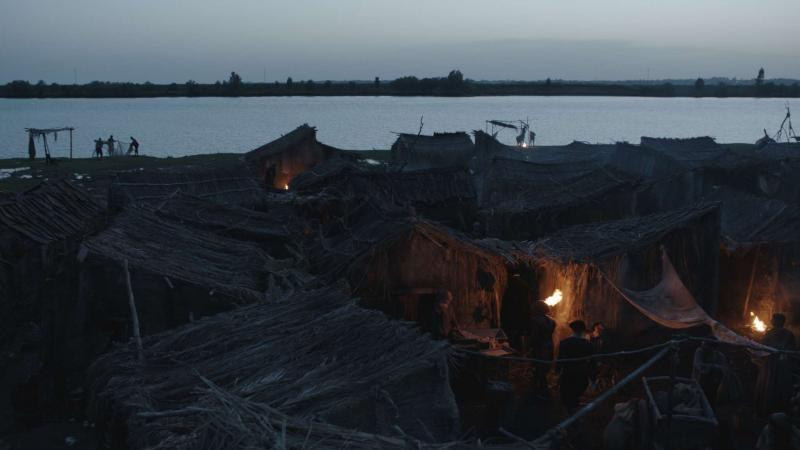Twin Pines, the Madrid-based VFX studio, is the creative force behind the visual effects for the successful TV series La Peste (The Plague), a Spanish superproduction by Movistar+ which broke viewing records and saw one-in-five binge watch the series in a matter of days, selling rights all over the world and clocking in as the costliest TV series ever made in Spain.
The biggest challenge was digitally recreating the city of Seville of the period with the same historical seriousness as a history documentary. To this end, throughout the production process it worked alongside a whole series of historical advisors, documentary makers and an art director for VFX. The exhaustive development of visual layers and the creation of 3D elements by computer relied heavily on maps, etchings and paintings from the period.
“The job of reconstructing the city was formidable given that there is practically nothing existing today of 16th-century Seville”, explained Juanma Nogales, VFX supervisor at Twin Pines. “It required a painstaking process combining historical seriousness with aesthetic taste. And that’s where the collaboration between all the different teams came in: art (Pepe Domínguez), make-up (Yolanda Piña), photography (Pau Esteve), VFX (Juan Ventura, Juanma Nogales), postproduction (José Moyano, Iván Benjumea)… Unless everybody is on the same page, working in the same direction, such an ambitious production as The Plague would not have been possible. And the results are there for everyone to see.”
Twin Pines started working on the project a long time before shooting actually begun. First of all, there was an initial phase of contextualisation, which was then followed by execution, and this took up to ten months of work. “One of the biggest technical problems we came across was that, unlike other productions we had done before, we didn’t work in fields but in different sets in which the cameras moved freely in 360 degrees. Using immersive techniques, we had to insert the computer-generated elements”, recalled Nogales.

Before
After
One of the most complex parts to replicate was the port of Seville, which was the most important in the world at that time. Twin Pines solved the problem by recording several images of the Guadalquivir river around the area of the Isleta in Coria del Río, which was then digitally mastered to achieve an end result faithful to history. The team at Twin Pines also had to model the ships and galleons in the port in 3D, which were then integrated into the different scenes.
At the beginning of the first episode, the main character appears on horseback looking down on Seville from a distance. The only real thing in this scene was the horse. In fact, the character was on a hill overlooking a motorway and, using a green screen, 16th-century Seville was reconstructed using computer-generated 3D elements.
Also worth underscoring is Twin Pines’ work reproducing the crowds of people. For instance, in one of the episodes, a space holding around 15,000 people was filled with just 100 extras, with the help of a greenscreen and a lot of individuals recreated digitally after scanning the extras and their clothing in 3D.
At the same time, a large part of the buildings and monuments that feature in the series are not actually from Seville. What the team did was to use similar buildings as references, many of which were photographed and rebuilt in 3D, like the cathedral, the city walls, the poor quarters, the city gates and St George’s Castle. Nowadays these buildings or areas are completely different or the still existing monuments are now surrounded by a different landscape.
In addition, the visual effects in The Plague included a major work of digital extension of the sets, the reconstruction of natural spaces, the integration of backdrops, and a long etcetera. The whole process generated a volume of data for VFX of around 50 terabytes and over 19,500 hours of rendering. Nuke Studio software by Foundry played an instrumental role in the project by enabling VFX, editing and finishing with one single application.
Juanma Nogales is taking part in a talk on FMX on Wednesday 25 April at 17:00, precisely to talk about the use of Nuke Studio in The Plaguea, as part of the most important symposium on digital visual arts in Europe, held annually in Stuttgart (Germany).
Created by Alberto Rodríguez and Rafael Cobos, the first season of The Plague, consisting of six 50-minute episodes, can be seen on Movistar+. Following the fantastic results since it was first screened, the company has already confirmed a second season for 2019.
With a budget of 10 million euros, around 200 actors, over 2,000 extras and 400 technical experts were involved in this superproduction. The Plague was the first TV series included in the official section of an A-list international film festival, as was the case in the San Sebastián Festival. With a January 12 premiere, the show became the best premiere of a series in Movistar+ in 2018. The Spanish telco recently launched a drama channel across Latin America called Movistar Series, with 12 original series to debut throughout 2018, including The Plague.
To view a reel of Twin Pines with effects from The Plague, follow this link: https://vimeo.com/259317794
About Twin Pines
Founded in 2008, Twin Pines is a VFX studio based in Madrid made up a dedicated team of experts who are passionate about film. Twin Pines won the prize for Best Special Effects at the Gaudí Awards 2014 for Los últimos días by Álex Pastor and David Pastor. To its credit the studio also has two nominations for the Goya Awards for Best Special Effects in 2010 for También la lluvia and in 2014 for Los últimos días. It was also nominated in 2014 for Best Visual Effects in the Ariel Mexican Film Awards for Heli by Amat Escalante. Visit: http://twinpines.es/en/

